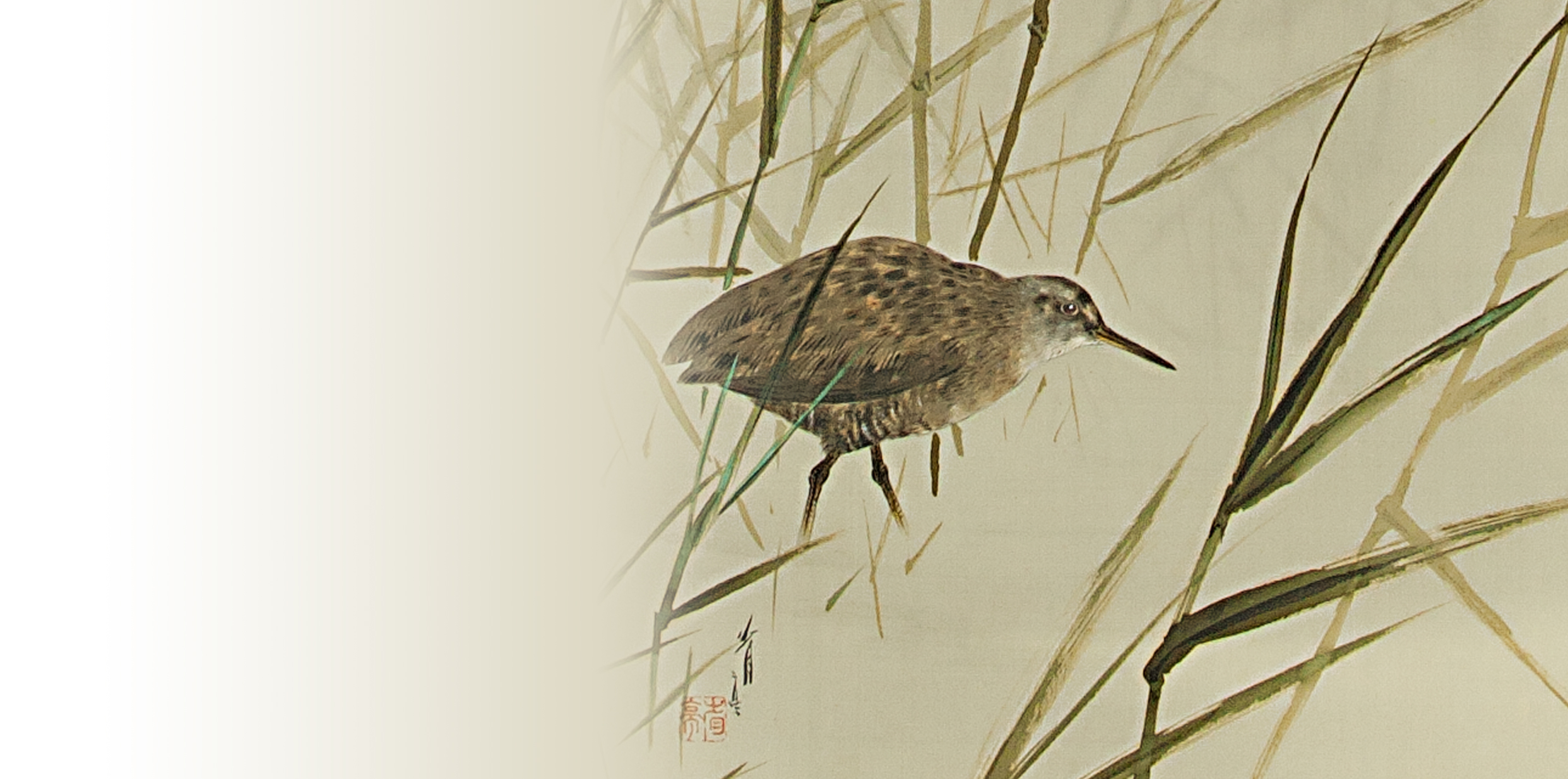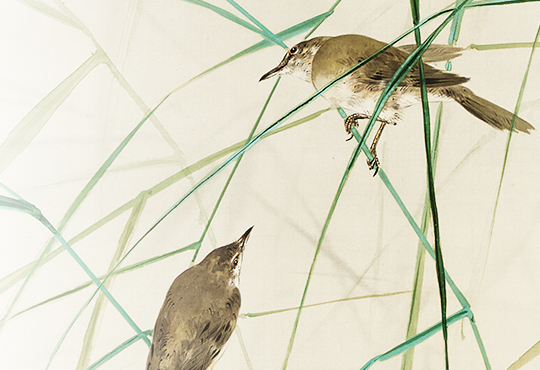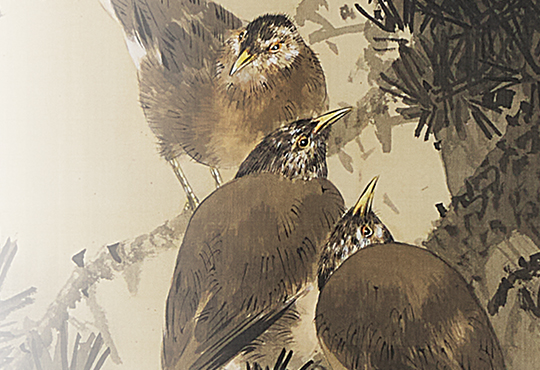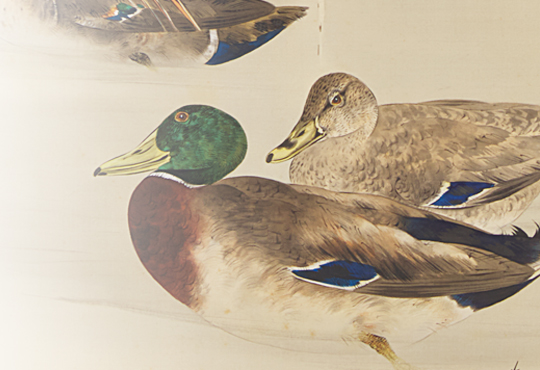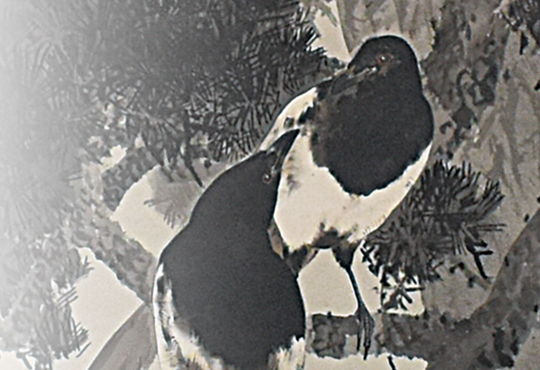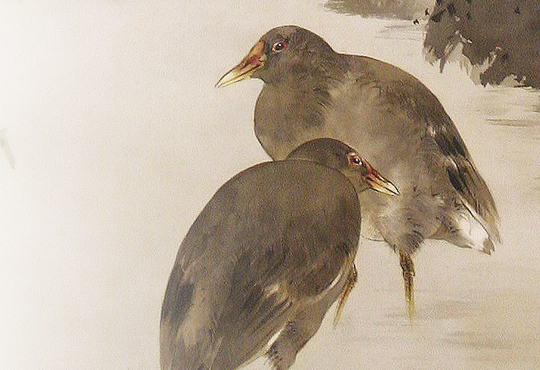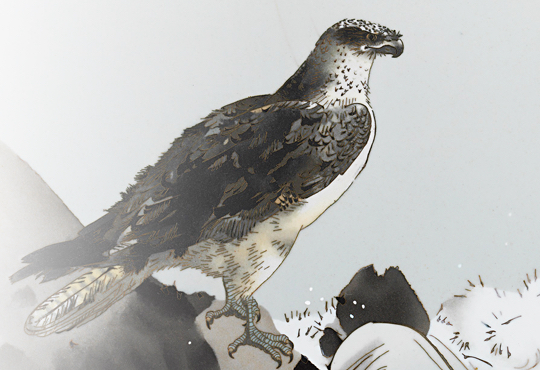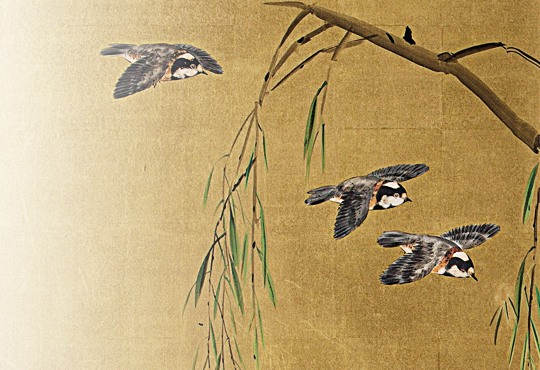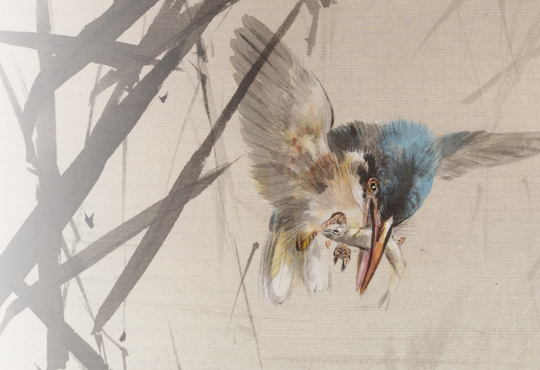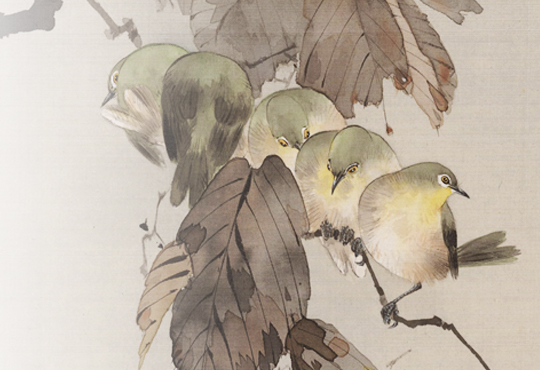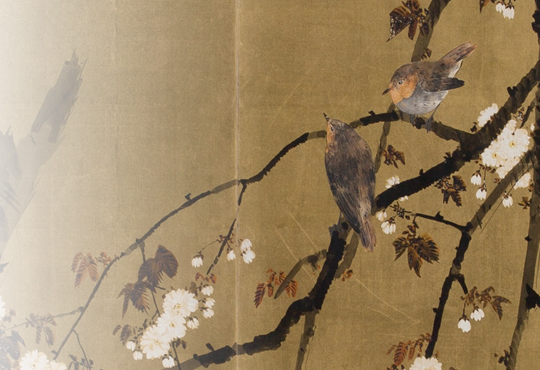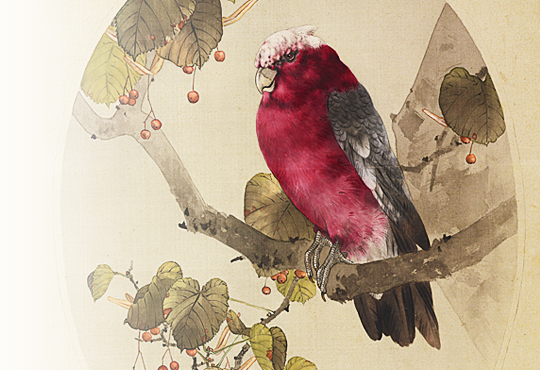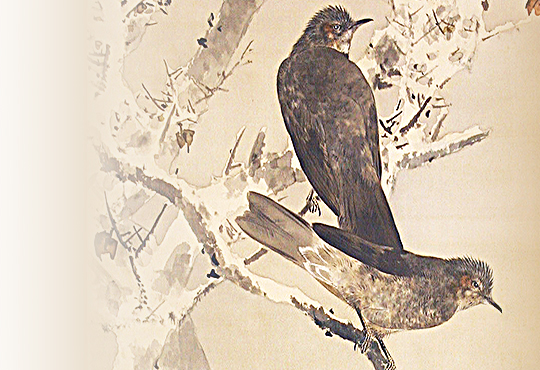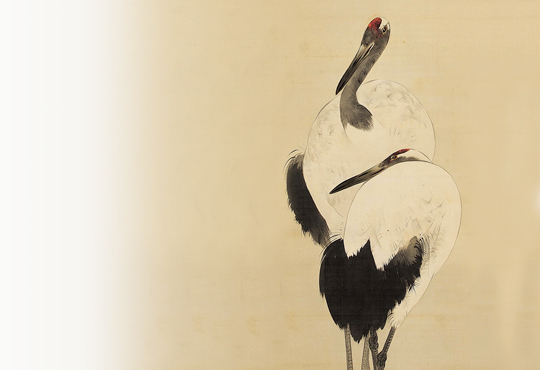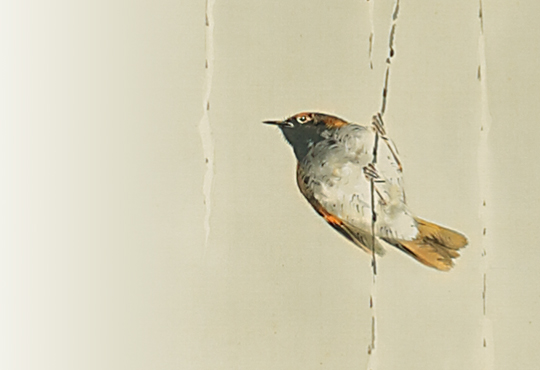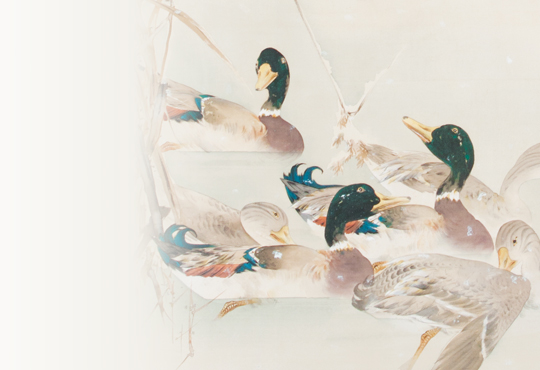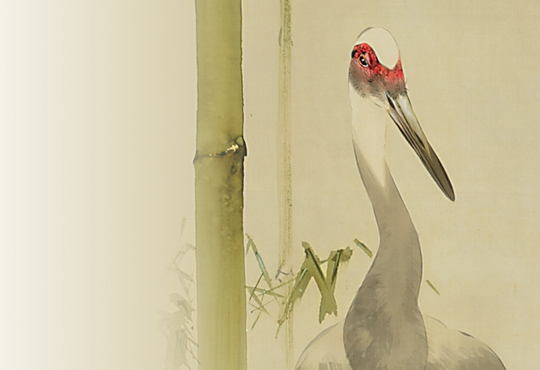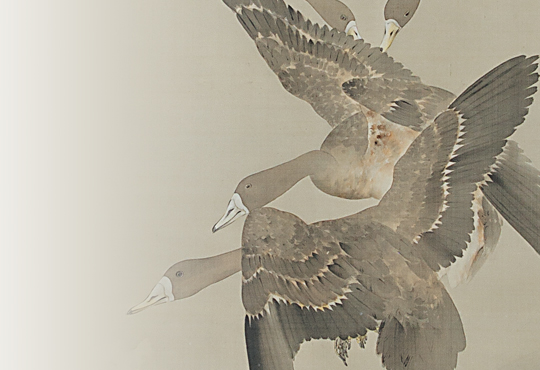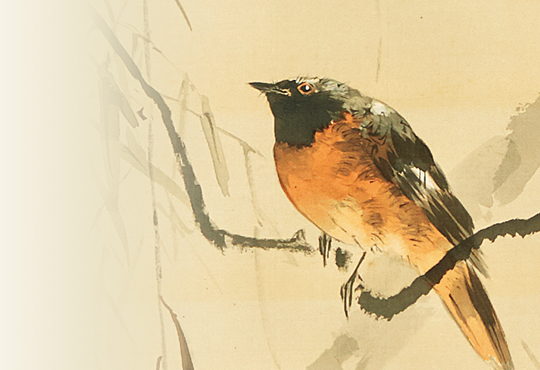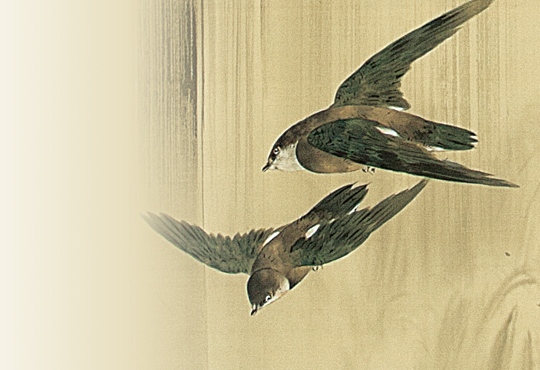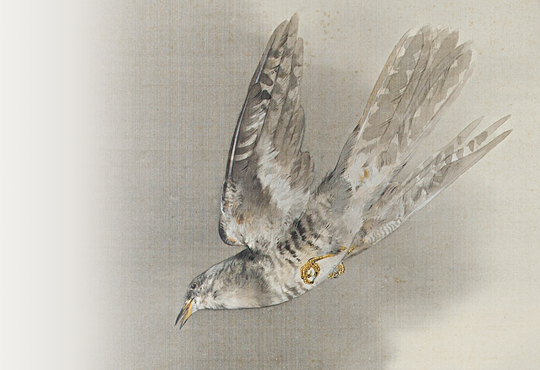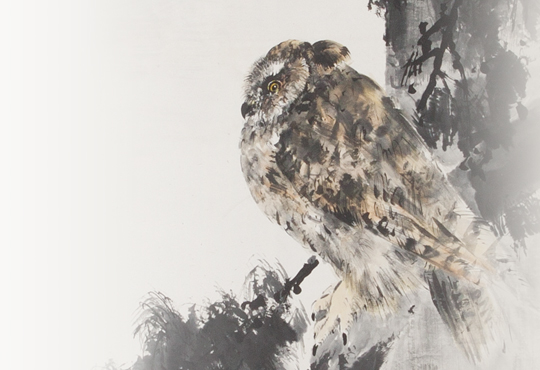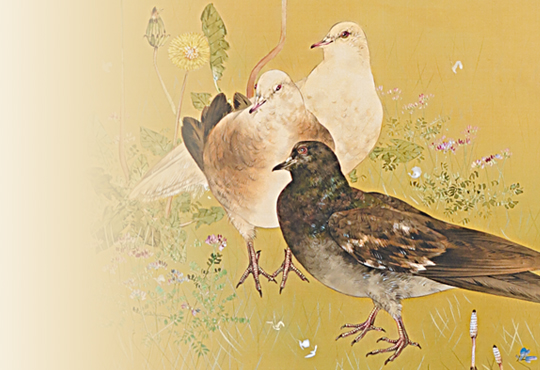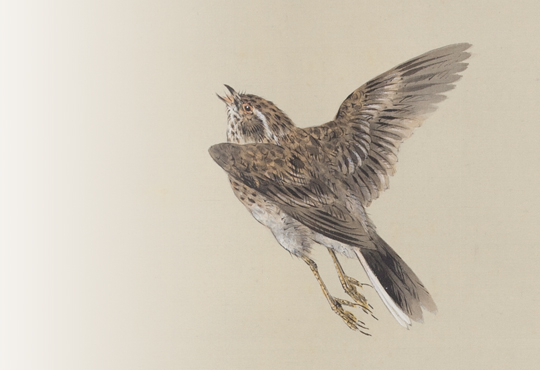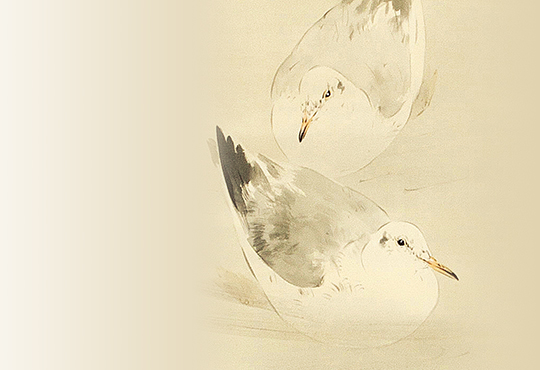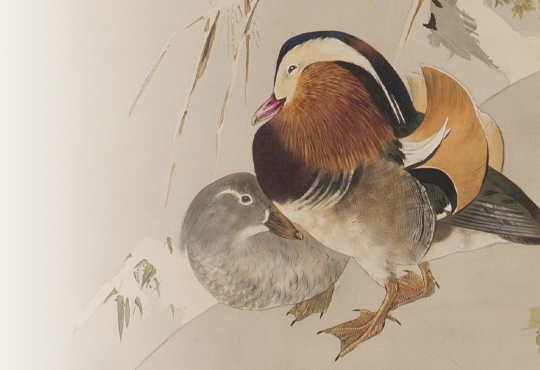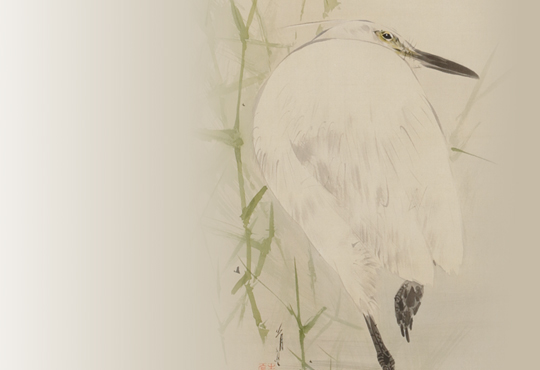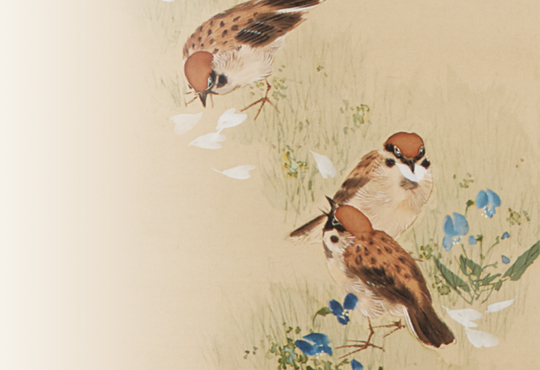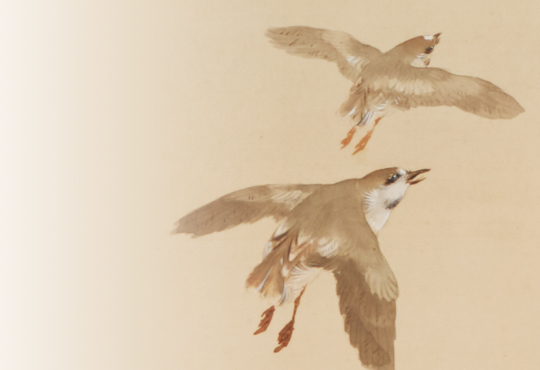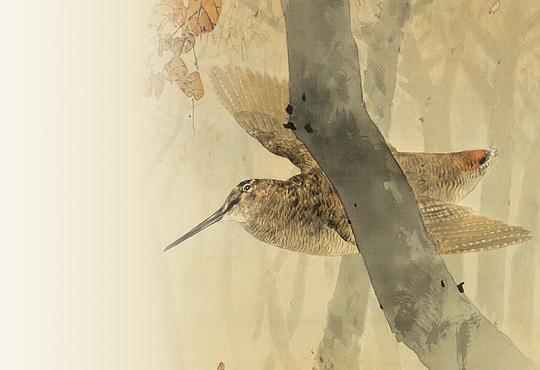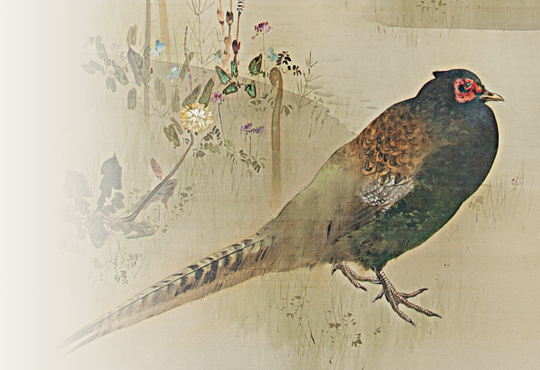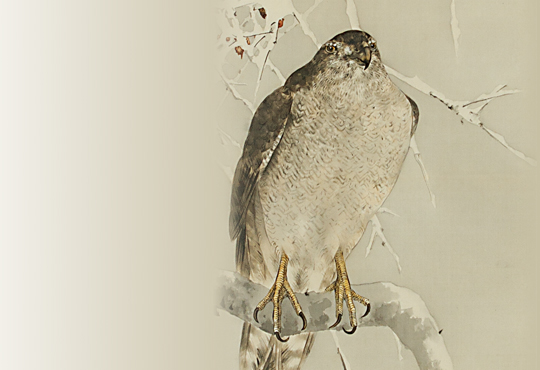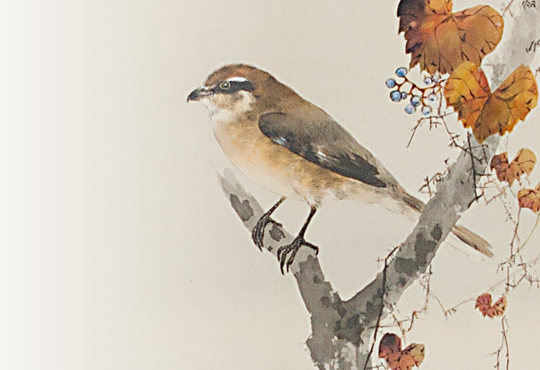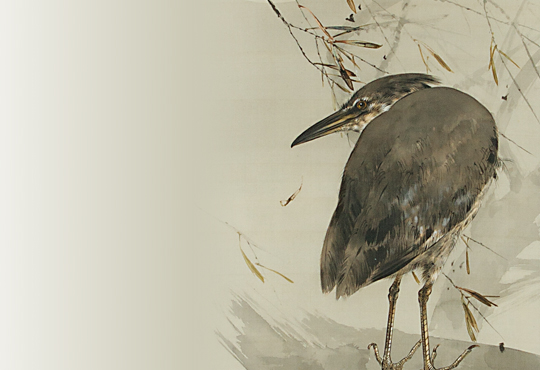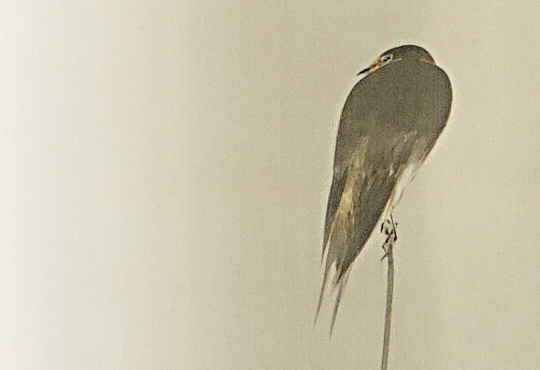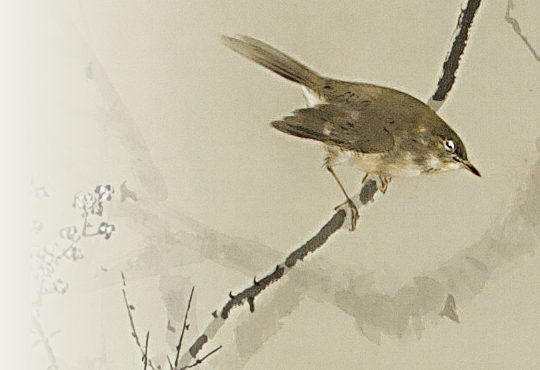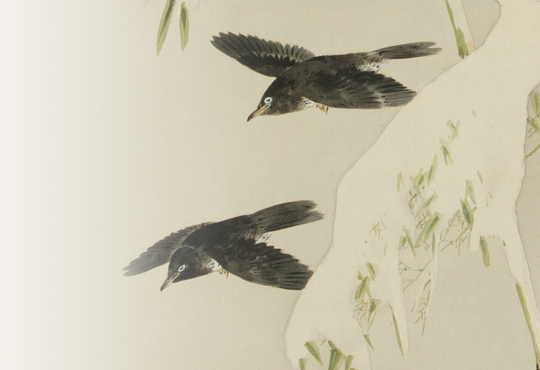Water Rail
A set of twelve scrolls,
color on silk, with a box signed and sealed by the artist
size : 115×40 ㎝ /212×54 ㎝
vol.04 Summer Rail and Water Rail
This is a scenery by the water.
The reeds at the front have stronger brush strokes in dark green in contrast to the ones at the back and it gives the painting an impression of depth. For there are scattered lower-height reeds and no other grass on the ground, we know that the area is near the water. The leaves of reeds are leaning towards the water in the right, and a Water rail is walking from the left.
There are about twelve species of rails and crakes in Japan. They are medium-sized birds living in wetlands, rice fields and forests. Better at walking than flying, they are usually spotted picking and eating small animals that live on ground. Because of bearing a resemblance to a chickenʼ s behaviors, they are called as “Kuina” in Japanese, means “water chicken” .
The Ruddy-breasted crakes (Porzana fusca: 23cm in body length) and the Water rails (Rallus aquaticus: 29cm) are common in Japan, and both live in wet grasslands near rivers, lakes and paddy fields. The Ruddy-breasted crakes are found all over Japan, relatively more in the southwestern region, and a few of them visit in Hokkaido and Tohoku (northeastern region) during spring and summer. They have a dark red body and vivid orange legs as its Japanese name suggests. Because they often sing loudly in the early summer, they are called “summer rail” , and have been featured in many literary works and artworks since ancient times. The Water rails, on the other hand, breed mainly in Hokkaido and Tohoku (northeastern region) and winter in central and southwestern regions, and then have been referred to as the “winter rail” . Unlike the former, they have rarely been focused in literary and art.
What makes this painting unique is the fact that Seitei purposely picked the unusual Water rail. Like all his other works, the details are immensely accurate: it has the long beak with an orange base, light red eyes, pale blue-gray face, and brown body with black spots along the back. The black abdomen also has spots in white and light brown. The orange legs are dipping in water. These clearly mean that it is a young or adult Water rail in winter. If it was a summer Water rail, it would have bright blue-gray face and chest, and a bright red beak.
However, we might see a contradiction here. A “winter rail” is depicted in a summer scenery. Why did Seitei choose such a mismatch theme? Why did he pick a “winter rail” and avoid the more commonly used “summer rail” ? Since this painting is for June in the 12 months scroll, wasnʼ t it more appropriate to pick a “summer rail” ? It might be for the timing of the paintingʼ s production and the attraction of its first release.
The production time for this painting was probably in winter, and judging from the accurate details, Seitei might observe an actual water rail and draw it on the spot. Water rails are only seen in winter in the Kanto region (including Tokyo) where Seitei lived. Thus, he would not have had any other choice than to draw a winter Water rail. He probably did not even know that a Water rail has a more vivid body in summer.
Moreover, Seitei was most likely aware that very few Japanese artworks featured Water rails. Aiming to create the first of such painting, he purposely chose the winter Water rail instead of the summer Ruddy-breasted crake. In the art world, like as in the field of science, much value and respect are placed on a first challenge ‒ a pioneer. Both as an artist and a bird lover, Seitei must have been proud to present this painting as the first portrayal of Water rail in Japanese artworks.
Author : Masao Takahashi Ph.D. (Ornithologist)
Dr. Masao Takahashi was born 1982 in Hachinohe (Aomori prefecture) and graduated from Rikkyo University’s Graduate School of Science. Dr. Takahashi specializes in behavioral ecology and the conservation of birds that inhabit farmlands and wet grasslands. Focusing on the relation between birds and art, he has participated in various museum and gallery talks.
